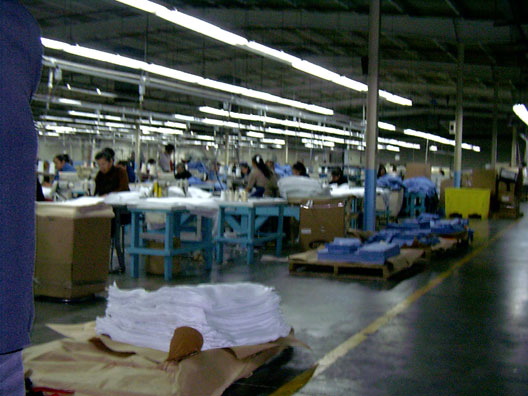

GLOBAL ECONOMIC INTEGRATION AND
TRANSNATIONAL MIGRATION
By: Carrie Stoner
In the early 1970’s, by examining profit rates globally, it was determined that a falling rate of profit existed. The chief method to counter this problem was to seek out cheaper labor. Global factories were then created as the solution to this problem of falling profit rates. With the birth of these global factories, came not only transnational corporations but also transnational migrant workers. Therefore, why is there so much debate concerning migration when it was basically conceived and in many cases continues to be, a solution to a problem?
Through global economic integration and the birth of global factories, many “underdeveloped” countries believed that these corporations would resurrect their dying economies by providing jobs to their many unemployed workers. However, these corporations did not hire the unemployed male but women usually between the ages of sixteen and twenty-one who worked approximately ten hours per day in extremely poor working conditions for very low wages. As a result, this left mostly the unemployed male (and/or the unemployed female over twenty-one) in a position to either migrate for work or become a caretaker for their families’ children.
As documented by several of the films we’ve watched during class, many of these unemployed workers chose to migrate – sometimes both mother and father leaving behind children to be cared for by extended family members. One such child when asked if he missed his mother and father replied “No, because I don’t even know them” which truly epitomizes the migrant workers’ sacrifices for their families!!
One might ask why do these migrant and/or global factory workers do the things they do? The answer is simple: They feel they have no other options as they have families to feed! Unfortunately, many countries can no longer simply “feed themselves” because “Colonialism destroyed the cultural patterns of production and exchange by which traditional societies in ‘underdeveloped’ countries previously had met the needs of the people. Many precolonial social structures, while dominated by exploitative elites, had evolved a system of mutual obligations among the classes that helped to ensure at least a minimal diet for all.” (Lappe & Collins 1). Simply stated, the birth of migrant workers evolved out of necessity when resources and/or jobs were taken away from families, which in the past were able to support themselves.
Another aspect of transnational migration and the communities it creates is brilliantly illustrated in Jo Ann Koltyk’s book, New Pioneers In The Heartland. Ms. Koltyk gives her readers an insightful look into such things as “who are the new immigrants? What are their lives like here in the United States and how are they redefining themselves and their cultures?” Her book not only gives great insight into the lives of the Hmong refugees from Laos, but also gives her readers a broader sense of migration issues concerning the role of transnational ties that link immigrants to their home societies.
The United States Army recruited the Hmong in the 1960’s as a special force of guerilla fighters to control the mountainous border regions between Laos and North Vietnam and to block the movement of communist forces and supplies. Funds from the Central Intelligence Agency supplied arms, ammunition and food to the Hmong for their alliance and support. Again, they were looked upon as a “solution” to a problem.
However, by the end of April 1975 with the collapse of Saigon and the pullout of U.S. troops, the Hmong found themselves unable to defend their territory without United States support. As a result, many of the Hmong now find themselves in the United States as refugees because they chose to help the United States during a time when the United States needed help.
According to Koltyk, “Hmong attitudes about their uniqueness as a people are grounded in the emphasis they place on family and kinship ties and in the belief that they can provide for themselves” which clearly reflects their need for survival and the right to support themselves and their families. This is also the driving force behind migrant workers as well – the right to support their families! .
The whole concept of global economic integration or even transnationalism is built around the fact the “the world is currently bound together by a global capitalist system.” (Schiller, Basch & Blanc-Szanton 8). This perspective allows us to recognize the “economic forces that structure the flows of international migration and to place the migrants’ responses to these forces and their strategies of survival, cultural practices and identities within the world-wide historical context of differential power and inequality.” (Schiller, Basch & Blanc-Szanton 8). Again, migrant workers exist because of economic circumstances and the innate sense of survival.
Therefore, why are there so many beliefs and debates concerning migration? Because some people just don’t get it! What some seem to be missing in these debates is that with global economic integration obviously come transmigrant workers (and in some cases their families too), so why debate whether they should be allowed to cross borders as they are simply the product of globalization.
Further, one should not forget that in many instances, these workers were “solutions” to economic or wartime problems!! Therefore, I strongly feel that migrant workers must be given the right to work regardless of what country they are from or what country they must work in!
Return to Carrie Stoner's Home Page
Return to Migration Home Page